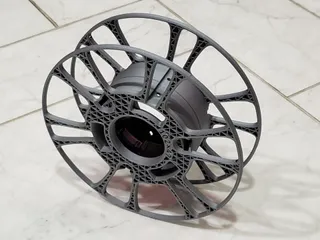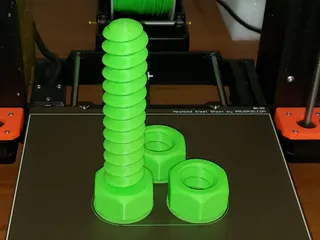Rubber-band powered paddle boat with Lego seat
Description
PDFThis was one of my son's first 3D printing projects some years ago, when he was 7 years old. His school has a 3D printer, but only for printing things that students design themselves. His teacher recommended TinkerCad to start, and I coached him a bit, but this is overall his own work except for the Lego brick in the middle, which I helped him import into TInkerCad. We didn't have a 3D printer back then. The the result pictured is what his teacher printed using ABS (same as Lego) but any material can be used.
This object was made in Tinkercad. Edit it online: https://www.tinkercad.com/things/3QtEklpQOVT
Operation
Find a thin rubber band, tie it off so you can loop it gently around the two booms, and thread the paddle wheel through the rubber bands. Turn the paddle blades to wind it up. Optionally stick a Lego person on the seat, put the boat in calm water, and let go of the paddle wheel.
Improvements
If we were to do this again, we'd widen the boat so that a standard rubber band could be used without tying and cutting it. This would also give the rubber band more room to wind up on either side of the paddle wheel. We might also raise the boat transom or cover the back end to prevent the paddles from splashing water into the boat. And it turns out 3D printed shapes aren't waterproof; water can soak in, so a sealant would be in order. Otherwise, it works reasonably well.
How I Designed This
The boat hull is an intersection of a rectangular cube and a squished sphere, hollowed out by subtracting a scaled-down copy of that same object. TinkerCad doesn't have an "intersection" operation, so my son had to subtract 5 cubes from the sphere to make the top, bottom, back, and sides. The paddle wheel is constructed from three highly-squished cylinders.
Everything follows the 45-degree rule so this can be printed without supports.
Category: Mechanical Toys
Tags
Model origin
The author marked this model as their own original creation. Imported from Thingiverse.




